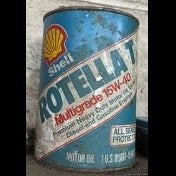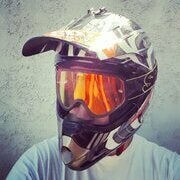Search the Community
Showing results for tags '2-stroke'.
-
I decided to build my own pipe dent remover using the hydraulic (water) method. It was quite simple, as long as you have a drill press (or a friend with one and some beer) you should be able to get this done. This method is much safer than the air pressure/torch method, but both methods you need to take care and know of the risks. Items to Purchase: 1-1/2" to 2" bearing puller. Note the throat diameter of my pipe was 44mm. Bolts and washers to suit bearing puller, approx 1-1/2" long. They are likely 3/8" bolts about 2” long. Qty (2) 1" rubber expansion plugs (normally used to close a block heater port in an engine block), get these from your local auto parts store. Long carriage bolt to suit placing the two rubber plugs on (it's likely 5/16" thread) Plumbers tape Pipe hydrostatic pressure test hand pump rated to 50 bar or more. This is what I used, but theoretically even a grease gun will work, it will just take longer as it has low volume. I purchased mine off Alibaba. Old HD inner tube Teflon tape Rubber adhesive NPT Hydraulic fittings to adapt your pump to your 1/2" plate (this will vary depending on your build) Cost: <$100 CAD (for reference, does not include cost of tools) Engine Side Build: 1) I drilled (2) 1/2" holes to suit the holes in the bearing puller, measured out from the center from the plate. The distance between the hole locations were measured by first clamping the bearing puller to the throat of the pipe, then measuring the distance between the puller holes. Ideally these should be slotted holes so that you can do varying sizes of pipes. That's my next step, I'll probably have a friend machine mine into slots. There was a slight difference between my OEM pipe and my Gnarly throat diameters, I ended up just using a carbide grinder bit on a dremel to oval mine out a little. 2) Drill and tap an NPT hole to adapt to the pump hose, I used ¼” NPT. 3) Cut a piece of old HD inner tube to suit the plate, and glue it on. I used 3M spray adhesive I had kicking around, but rubber cement should work as well. 4) Attach your fittings and hose to the pump and plate. Just a side note that I did grind my bearing puller to match the throat of the pipe just a bit, even a round file works fine so that you get the correct radius. Silencer Side Build: Take apart your rubber expansion plugs and reassemble and stack them on the new carriage bolt. Mine came with a small o-ring at the head of the square of the carriage bolt which I reused. I think 3 plugs would be ideal and my cause less slippage. It may also be a good idea to roughen up the rubber somehow so that it grips better, as this rubber is quite smooth. Assembly and Use: Watch this first as it explains a lot: Clean any carbon off the engine side throat so it doesn’t leak. A wire brush should work for this. Assemble the bearing puller to the throat and tighten it up, then place the plate over the holes so the old inner tube seals the throat. Tighten up the plate to the bearing puller. You don’t need to go crazy, just make sure you tighten down evenly and that there is a bit of resistance. If it leaks you can tighten a bit more. Clean carbon and oil out of the silencer side as well, I used a bit of contact cleaner and had a 1” wire wheel I was able to fit into the pipe. I used a cordless drill to clean it out this way. Next, fill the pipe completely with water. Keep rotating the pipe around to make sure there is no air in the system. WARNING!! IF YOU HAVE AIR IN THE PIPE YOU ARE ESSENTIALLY CREATING A GUN, BE VERY CAREFUL WITH THIS STEP! ASK MY GARAGE CEILING HOW I KNOW! Next wrap a piece of plumbers tape around the top expansion plug, and stuff the works in the pipe. The water should be at the tip of the silencer side at this point, and as you push the plug in water should be spilling out so as to ensure there is no air inside. Tighten this plug down really well, until you don’t feel you can tighten it anymore. This is effectively squishing the rubbers together to create a seal, and gripping the rubber against the plumbers tape and pipe to create friction and prevent the plug from coming out. Wrap some safety wire around the end of the plug and around the pipe somewhere so that in case you do mess up (ie/ have air in the system), the plug doesn’t shoot out. Make sure the silencer side plug is facing away from anyone in case you do have air in the system. Slowly begin pumping. If you notice the pressure is not climbing after even the first pump, you have air in the system, stop what you’re doing, release pressure at the pump, and bleed any air out. You will need to pump to 500-600 psi. With thicker pipes like the Gnarly, I needed 600 psi. I then used a small hammer and hammered around the outside edges of any dents left, and they will slowly pop out. I chose to do this instead of pressurizing further as I didn’t want to damage the pipe or risk a weld bursting. This was also about the reference pressure in the video I linked to. Sometimes you will have pinholes in your pipe, and a small mist of water may come out. If water is enough to flow out and you can’t build pressure, you will need to get the holes welded first before this will work. Lastly, release the pressure on the pipe by the relief valve on your pump. If you’ve got a different setup make sure you add some way to relieve pressure, and measure pressure with a gauge. Disclaimer: I can not be held responsible or accountable for any damage or injury incurred from anyone attempting this. Safety is of utmost importance, do not attempt this if you are not comfortable using pressurized water or using any of the equipment.
- 4 comments
-
- 3
-

-

-
- PipeRepair
- 2-stroke
-
(and 1 more)
Tagged with:
-

Everything You Need To Know About The Two-Stroke Cylinder
Paul Olesen posted a blog entry in Moto Mind
This week I want to talk about two-strokes. To kick off this post I have some awesome news. The Two Stroke Dirt Bike Engine Building Handbook is off to the printers and will be available for pre-sale very soon! Getting the book off the ground has been no cake walk. It's been two years coming and we are so thankful our riders and fans have been patient with us! At the end of this post I'll give you instructions on how you can stay updated on the launch. With that said, let's get started. Today's post aims to provide an overview of the important aspects of the two-stroke cylinder and answers a couple commonly asked questions relating to cylinder modifications. The ports found within a two-stroke cylinder in combination with the exhaust system have the greatest influence on power, torque, and the RPM at which maximum power is created out of the various engine subsystems found within a two-stroke engine. Typically when a new engine is designed the port characteristics are one of the first parameters to optimize. With this being the case they are also one of the first things anyone planning on altering an existing engine should consider improving or tailoring to their specific application. A two-stroke cylinder consists of exhaust, transfer, and occasionally inlet ports (true inlet ports are only found on piston or rotary valve controlled engines). The port heights, widths, areas, directions they flow, and relationships to one another all have a significant influence on how the engine will behave. The cutaway of the cylinder shown details the port arrangement and common nomenclature. The inlet port/passage delivers air into the engine’s crankcase, most commonly through a reed valve, on a dirt bike engine. On older engines, a rotary valve or the piston may also be used to control the opening and closing of the inlet port. On modern machinery, the inlet simply connects the reed valve to the cylinder or crankcase. In this case, the primary restriction in the inlet port is the reed valve and as such the valve’s geometry and flow capabilities often dictate the inlet port's performance. The transfer ports are responsible for moving fresh air and fuel up from the crankcase into the cylinder. This occurs as the piston travels downward after the cylinder has fired. Once the piston uncovers the tops of the transfer ports the blowdown phase is complete, at which point much of the exhaust gas has been expelled from the cylinder. As the transfer ports begin to open, the exhaust pipe sucks fresh mixture up through the transfer ports into the cylinder. To a lesser extent, the downward motion of the piston also aids in creating a pressure differential between the crankcase and cylinder. The shapes and flow capabilities of the transfer ports play a big part in how effectively the cylinder can be scavenged of exhaust gases and filled with fresh air and fuel. The transfer ports also help cool the piston. The exhaust ports dictate how much and how well exhaust gases depart the cylinder. Similar to the transfer ports, the duct shape, angle, length and volume have a large influence on how well gases can flow through the port. Typically, dirt bike engines commonly feature bridge port or triple port designs. General insights into a cylinder’s performance can be made by characterizing attributes such as the timing of the exhaust and transfer ports, the port widths, and the directional flow angles, but a deeper analysis is required to truly optimize a cylinder. Today, tuners and designers rely on computer software which computes a port’s specific time area (STA). As defined in the EngMod 2T software suite, “STA provides an indication of the effective port window area that has to be open for a certain length of time to allow enough gas to flow through the port to achieve the target power at the target RPM for the given engine capacity”. STA values are used to quantify the exhaust, transfer, and inlet port geometry as well as the blowdown phase of the two-stroke cycle. The blowdown phase occurs between exhaust port opening and transfer port opening and is one of the most important parameters in predicting engine performance. By manipulating STA values and subsequently the height, shape, and size of the exhaust, transfer, and intake ports, an engine’s power characteristics can drastically be altered. Port modifications can be made which allow more air to move through the cylinder, ultimately increasing the power of the engine. Conversely, ports can be filled or welded and reshaped which tame the engine and provide less peak power but a broader spread of power. Simple modifications to the ports can also be carried out which improves the air or exhaust gas flow through the port yielding better cylinder scavenging. Can I modify my own cylinders? Unless you have a deep passion for two-stroke tuning, are willing to spend money on software and porting equipment, and are comfortable throwing away botched cylinders, I would recommend having a reputable professional carry out any desired port modifications. Experienced tuners have developed a number of porting combinations that will work well for various makes/models and riding applications which will take the guesswork out of the situation and provide you with a good performing cylinder. Who should consider two-stroke porting modifications? For the sake of simplicity, I will lump porting modifications into two categories: major and minor. Major port modifications would include tasks such as significantly changing the port timings (by either removing or adding material), altering the shapes of the ports, or changing the directions the ports flow. Anyone drastically altering their engine, such as turning an MX engine into a road racing engine, should consider major porting modifications. Other examples of applications that may require or benefit from major port modifications include drag racing, hare scrambles, ice racing, or desert racing. Minor port modifications would include basic tasks such as removing casting flash, slightly altering the ports to achieve the stock port timing, and correcting areas that result in minor flow deficiencies. Just about everyone could benefit from these types of corrective actions; however, if the engine is already performing or producing adequate power, they often aren't considered. I hope you enjoyed this writeup on key features affecting the performance of two-stroke cylinders. To stay officially updated on The Two Stroke Dirt Bike Engine Building Handbook we created an email sign up for our readers. Click this link to see the new cover, the Table of Contents, and some sneak peek pages right from the book. Thanks for reading and have a great rest of your week! -Paul- 9 comments
-
- 5
-

-
- twostroke
- diymotofix
- (and 4 more)
-
I had fun building up a couple CR250R 2-strokes. Ken Roczen is hero, so these were a tribute. Also I thought it would be cool to mimic the look of the CRF450RWE. I'm adding black triple clamps and bars and a "Factory Racing clutch cover to the red 2004. The black 2002 is all stock just about everywhere and was a barn find. It need a new pipe. I know some don't care for the black bike. I'm planning to do another CR250R and also a CR125R in a similar style. Any suggestions? Maybe blue with white/red? Red with black? Black with flo yellow?
-
Okay guys, I have a 1997 kx250 frame and I wanna know(if even possible) if there are any 2 stroke engines besides the original that will Bolt onto the frame without any modifications.
-
So I'm looking for some pivot levers for my clutch and hand brake on my '99 KX 250, I found these ones on amazon that say they will fit an '00 to '04 kx250, do you guys think these would fit my '99? if not do you know any that I can buy online, Im looking for green ones specifically, Thanks. https://www.amazon.com/MZS-2000-2017-2001-2017-2000-2005-2000-2004/dp/B01E6XQDFM/ref=wl_mb_wl_huc_mrai_1_dp
-
Backstory: 2003 cr125 piston siezed during mud race. cylinder replated, fresh top end, all back together and bike rips well but looses coolant out exhaust. Fast forward 3 years and 3 complete gasket sets later and found out that the replated cylinder had a crack behind the inner power valve axle stay, so it was loosing coolant out the power valve. Now: new oem cylinder and head, fresh wiseco piston, carb rebuild, air filter, fresh silencer packing, and now the bike starts and runs well but bogs soooo badly off idle and when i crack it WOT. feels like its misfiring. it rolls on power okay if i roll onto the throttle slowly. Im at a loss. So far I have changed out spark plug, checked correct piston orientation, checked correct PV operation, Jetting is currently 410 main, 37.5 pilot, needle 2nd cip, AS 1.5 out. I don't know what to do with this bike. Can anybody suggest anything that I haven't tried yet? I want to get this bike back on the trail
-
I am looking for a YZ125 and have found a 99 for 1300 and an 03 for 1600 both in pretty nice condition. Obviously going to negotiate the prices down however I was wondering which one you guys would suggest. Ive been doing research and know that the 03 is lighter with a modified frame though it has a 5 speed. The 99 motor is well liked for the power and reliability. I will be doing strictly trail riding so whats the better option here?
-
So I bought this bike about 2 months ago .. noticed a small leak where the exhaust manifold and expansion chamber meet the head mounting studs.. seems to progressively get worse as I ride as I notice more smoke. so I pulled off my pro circuit pipe and my exhaust manifold and I noticed the top stud is super stripped (the nut just keeps spinning on the stud). I am wondering how I can get this stud out because it seems to just be a stripped stud and it will not just turn out with vice grips.. and are there any recomended studs or sealers I can use ? Also how am I going to screw in the new stud without damaging the threads ? As you can see I don't have enough room to put 2 nuts on and screw it out as I tried that !
-
So basically. I got this yuuuuggeee RM250 in a trade. It is a really nice bike. I really didn't know much about it when I got it, except that it was very pretty and extremely fast. Anyways, I look it up and find that its the only year of air cooled engine w/ mono shock suspension. Anyways I have been storing the bike ever since on inside of my house and I think its time to make some space. The bike deserves to be ridden more... Honestly, I am a little afraid of how fast it is! And in case you can't tell where this is going... I decided to sell the bike and thought maybe you would be interested. I know its not from the best era or the coolest bike you've ever seen... But it is clean, fast, and pretty dang rare. If you appreciated that I didn't just throw this at you and say BUY MY BIKE and instead wrote a semi-thoughtful write up about it and then hooked in the advertisement at the end. You should check out the bike on Ebay. Ill put the link below. It deserves a good home. Someone like you. Someone like your son who's birthday is coming up. If someone wants it come and get it. No reserve, I sell to highest bidder no questions asked. I will help with shipping, provide more info, etc at jonahdeich@gmail.com. The bike is located in Savannah, Georgia http://www.ebay.com/itm/222475245091?ssPageName=STRK:MESELX:IT&_trksid=p3984.m1555.l2649
-
Recently picked up a brand new YZ250x 2017 and this is my log on why i think this is the best Motocross and Endrocross 2 stroke out there!
-
Recently picked up a brand new YZ250x 2017 and this is my log on why i think this is the best Motocross and Endrocross 2 stroke out there! Currently the bike is all stock! I've made a few adjustment for my carb such as a 172main and a 48 pj. right on the mark for main jetting in Colorado. Power is nothing but smooth and predictable one of the best 2 stroke iI've ever rode! As time goes on i will add parts to this bike and keep you guys updated on what they do! hope everyone's excited! If you like to sponsor the bike or have a product you like tested please contact me at tatmanjosh@gmail.com
-
What size jets should I run for a fmf fatty header and a fmf shorty silencer
-
Hi there, I am new to all of this but would appreciate some advice on my kx85, which currently has oil leaking from the front of the exhaust box (ses photos for location.) Can anyone please advise me if this is normal and just needs a good run at high revs, or if not, how to fix it. Any advise appreciated. Thanks in advance Ben.
-
I am thinking of buying a dual sport for commutes/trail riding and I have 2 models in mind but not sure which one would be better. Either a 2009 Yamaha WR 125R with 49,000km or 1990 Yamaha DT 125R with 63,000km (although engine rebuild last year). I can't decide if I want 4 stroke or 2 stroke. I'm aware that 2 stroke are much cheaper and simpler to rebuild, but the reliability of the wr 4 stroke engine seems very good. It also has EFI vs a carburator on the DT. I'm quite worried about engine seizing on the 2 stroke. Which one should I get?
-
I'm having a little bit of a problem with my 2002 cr250 and I hope you guys can help me figure it out. Every time I wash my bike water ends up in the carb,reeds I do use a power washer but I don't get too close to any of that stuff, it makes the bike idle really high when I first start after a wash and hard to start at first. TIA.
-
So as many of you probably already know, their is this company (In Germany I think) called Maico. They make MONSTER 2-stroke bikes, such as their 700cc 2-stroke dirt bike, they are complete badass bikes and I really want one, but i dont even know where to start looking, I've check my local craigslist and other local selling websites and had 0 results for any maico bikes, does anyone know how I could possibly find one in the US. Willing to pay a lot these bikes are super cool.
-
Ive posted my problems in the 200 club, but my issue doesn't need to be cluttering up that thread. The Problem: About 3-4 weeks ago, I have noticed that all the way up in the revs, the bike kinda sputters and cuts out. Power down low is not effected and the bike idles/starts just fine. Not erratic, but when I open it up, it makes this noise and the bike loses power. It almost sounds like a 4 stroke rev limiter tbh. What I've done: I have changed jetting, gone leaner and richer with mains, needles, and needle pos. Jetting has remained the same and this wasn't an issue before. I was able to hit max speed no problem before. But did anyways to see if it would do anything. I have taken the cylinder off to clean the powervalve. I did that 30 hours ago when I did my top end, but did it again to make sure. Put it back together to Andrew Cookseys video on YT. I have checked the powervalve linkage in the inner clutch cover. All the ball bearings were in place where they should be on the timer. I replaced the actuator pin that connects the arm and the centrifugal timer. I had an aftermarket 1 way valve gas tank thing on my gas cap. Took that off to see if it was causing a vapor lock. Nope. I have clear fuel hose from the tank to the carb. There is gas flowing. I am going to today take off the carb and deep clean it and check all the ports and what not to make sure they are not plugged with stuff. I have no idea where to look now after the carb. I guess it could be an electrical problem but I really hope not.
-
Hello all, I recently picked up a 1978 Yamaha IT175 off of Craigslist that needed a ring. Instead of doing just the ring, I have ordered a new piston and ring and am going to replace both. I have never worked on a 2 stroke this old before and have never done a top end on any bike before, so I was wondering if anyone could put me in the direction of an instruction sheet for the top end on this bike as well as some tip and tricks for general stuff. Also, if anyone has first hand experience with a similar bike, that would be awesome! Thank you all in advance!
-
Hello all, I recently picked up a 1997 KTM 250 EXC and the graphics on it are a little scratched and faded and I am in the process of looking for new ones. However, I have not been very successful as the ones I have found are not to my taste. I am really looking to get a Red Bull or Jagermeister set if possible, and I am willing to pay up to $150 for a set that actually fits my bike. If anybody has an advice on where to search, that would be awesome. Thank you all in advance!
-
Hey Thumper guys - Looking for some advice .. I recently picked up a cherry 02 YZ250 with the intent on building for single track and off road ridding .. It's been a while since I've been on a smoker and forgot how much fun they are compared to 4-strokes ... The bike runs amazing but spooges like a SOB.. Any advice on where to go with jetting/pre-mix is appreciated .. Also important: the bike was purchased in AZ and was jetted for higher and colder elevations .. After messing with the jetting I adjusted to below and it runs amazing but just spooges like no other. Ive follow a few of the treads on here around how to dial in jetting and feel the bike runs perfectly, Super snappy of the bottom and rips on the top Here's current specs that should/can effect the spooge: 02 YZ250 = New Wisco Top end, JD Jet Kit, FMF Granrly Pipe & Turbine Core Silencer, New UNI Air Filter, NGK BR8 Iridium plug, MotoTassinari VFORCE3 Intake w/ Carbon reeds, new FMF Packing Jetting = Red JD Needle (3rd clip from Top), Main: 168, Pilot = Stock (50) Ridding conditions: Elevation= 1,500 ft .. Temp= 70 degree's Pre Mix= Motul 710 at 40:1 mix .. Originally ran at 32:1 per the owners manual but moved to 40:1 in hopes it would help but no such luck I know that i'm going to get some spooge due to not constantly being on the pipe but theirs gotta be a better solution to the mess i get .. I also don't want to go to lean and fry my piston either.
-
History: The brief history of the Japanese Lubricating Oil Society (JALOS) with regards to 4-stroke requirements was described in JASO Explained: Part 1. A lot of the same reasons were given for the formation of the JASO M345 specification for 2-stroke oils as were given for the T903 specification for 4-strokes. At the time, there was a lack of control for performance levels of available lubricants and JALOS decided to form a specification that was designed specifically for motorcycle applications in the void left by other standards being discontinued. This gave the OEMs a standard to specify for use in their products that ensured their machines would not fail from inadequate lubrication. Prior to the JASO M345:2003 specification, the National Marine Manufacturers Association TC-W performance level was created in the 1960’s but focused on outboard and marine engine oils. The American Petroleum Institute (API) released specifications starting with API TA to API TC throughout the years, but in 1994 JALOS superseded the API specifications with the JASO FA, FB and FC specification levels. This release of new specifications was partly in response to the API discontinuing any progression to the API 2-stroke specifications ending with API TC in 1993. Another set of specifications developed by the International Standards Organization (ISO) are similar to the JASO specifications for 2T engine oils with some minor differences, and I’ll elaborate on those differences later in this article. After the FA, FB, and FC specifications, JALOS introduced the JASO FD specification to advance lubricant technology to an even higher standard and at the same time made the FA specification obsolete. So the three levels of performance currently maintained are FB, FC, and FD according to the JASO M345:2003 specification. Specification Details: The JASO two-stroke specifications are important because they create a benchmark for minimum performance criteria for 2-stroke oils. This particular category of products may just have the largest variety of properties and formulations in the motorcycle market. Many lubricant companies have their own methods for formulating 2-stroke oils and in doing so have developed many unique solutions to the main concerns of 2-cycle lubrication. Regardless of how the performance is accomplished though, what they need to accomplish is set by JASO in no uncertain terms. Figure 1: JASO M345:2003 specification for 2-stroke engine oil performance The numbers for Lubricity, Initial Torque, Part Detergency, Exhaust Smoke and Exhaust Smoke Blocking are all index numbers associated with scores associated with performance in each category. For each one, the higher the number is, the better the performance in that category. The general rules for the different performance levels are these: FB corresponds to high lubricity performance but without any low-smoke technology. FC meets the FB lubricity standards but also is a low-smoke lubricant. FD corresponds to higher detergency properties than the other two grades, meets the lubricity requirements and has low smoke requirements. Most of the performance testing is performed using standard test engines and measured by part raters following the JPI-5S-34-91 rating manual. Part rating is a very exact method of evaluating engine parts after use to determine their condition and raters are highly trained to perform this duty. Each of the methods uses specific engines for evaluation. Figure 2: JASO M345:2003 test methods and test engines The M340 test measures the lubricity and friction characteristics of the lubricant. Less friction means less heat generated from friction and may increase component life greatly by doing so. It may also contribute to lower wear, although this is not always the case as friction and wear are different and are often addressed by different parts of the formula. The M341 test measures the detergency of the oil which corresponds to its ability to remove existing deposits and prevent new deposits from forming on internal engine parts. The M342 test evaluates how much smoke is produced by an engine using the test oil. This test is partly for environmental reasons but also affects performance. Smoke does not often exit the exhaust cleanly and will leave soot in the exhaust system changing the geometry and surface characteristics. The M343 standard tells us what the exhaust smoke’s effect on engine performance is. With the exhaust system playing a big part in engine output in 2-cycle engines, soot and carbon buildup can affect that performance negatively if not controlled. The sulfated ash measurement assesses the oil’s contribution to ash formation caused by metallic additives that cannot fully burn. Many 2T oils utilize “ash-less” additive systems to eliminate this issue, but they are not required so this measurement is important. Flash point measures the temperature at which the volatile vapors given off by a lubricant are produced at a high enough concentration to ignite with a flame source. This may indicate how well an oil will burn or remain unburned in a combustion chamber. Many oils utilize solvents in their formulas which may give a low result not indicative of the actual lubricating oil so be aware that the reported flash point may not tell the whole story. I would recommend finding the flash point of a 2-stroke oil without its solvent component to get its true contribution to combustion. Kinematic Viscosity at 100°C is a measurement of the thickness or fluidity of the oil and contributes to oil film strength. The reason JASO M345 is in need of an upgrade is because of the two test engines used in Figure 2. The engines used for the tests are being discontinued and spare parts are becoming difficult to source in order to keep those motors running at the necessary performance level. Without standardized parts from the manufacturers, the engines cannot be kept running in adequate condition for the tightly controlled JASO testing. New engines are being tested and evaluated for standardization, and the next update is scheduled to go into effect in April of 2018. The original plan was to update the specification with new test engines in April of 2016, but JALOS announced that they were pushing back the launch date to 2018 due to repeatability problems. The Yamaha ET-1 engine is currently the leading candidate for inclusion, but testing is still underway to ensure compliance with the strict standards for the indexing of various properties measured by the JASO M345 specification. Figure 3: Yamaha ET-1 engine. Photo source: http://global.yamaha-motor.com/business/pp/generator/220v-50hz/0-1/et-1/ Because of the uncertainty in this engine’s ability to provide repeatable and reproducible results, the specification is being pushed back until its results can either be verified or a different test engine can be identified, so don’t expect anything new until 2018. It was unclear what kind of performance advancements the new specification would have incorporated before this delay, but it appears there is a plan to separate smaller displacement engines such as brush cutters, chainsaws and other handheld equipment from vehicles with separate criteria. For the time being though, engines and parts are still available for the current test engines so new lubricants can still be evaluated accordingly to the high standards that are already in place. Before I finish this article, I do want to briefly mention the differences between the JASO and the ISO specifications for 2T engine oils because it is a distinction worth mentioning. Figure 4: ISO 13738 specification for 2-stroke engine oil performance The ISO L-EGD and JASO FD are the exact same performance specification. The differences between ISO and JASO are in the B and C specifications. The ISO L-EGB and L-EGC specifications each have an additional detergency requirement. This means the ISO L-EGB and L-EGC specifications require higher performance levels than the JASO equivalents, but most oils that meet JASO requirements will also meet the ISO requirements, so there is rarely a difference between an oil claiming ISO or JASO performance levels. Review - So after all that your head is probably spinning trying to figure out what all of that means. So to boil it all down I'll try to sum it all up here: The JASO specifications indicate increasing performance levels with FB, FC, and FD specifications. The requirements include lubricating ability, cleanliness, smoke potential, and a few physical properties. ISO and JASO are essentially the same with a few minor differences. The performance specifications give machine manufacturers real and tangible minimum requirements to maintain their equipment and ensure high performance. With these specifications, we can look at specific performance differences between products to determine which is the best for our machines without having to rely on uncertain performance claims by lubricant companies or machine manufacturers. Useful Links - JALOS M345:2003 Specification manual JASO M345 Registered Lubricant List
-
Engineered, developed, and manufactured in-house in Wiseco's Ohio, USA facility, Wiseco is proud to announce a purpose-engineered forged piston lineup for Yamaha's latest 125 two-stroke platform. All '22 YZ125 piston kits include high-quality piston ring, high-strength wrist pin, and circlips. Offered in Three Different Two-Stroke Piston Series 899M05400 - 2022 Yamaha YZ125 ProLite Forged Piston Kit - 54.00mm 899M05600 - 2022 Yamaha YZ125 ProLite Forged Piston Kit +2mm - 56.00mm 900M05400 - 2022 Yamaha YZ125 GP Series Forged Piston Kit - 54.00mm RE931M05400 - 2022 Yamaha YZ125 Racer Elite Forged Piston Kit - 54.00mm Click Here for Complete Part Numbers and Specs ProLite (899M05400 & 899M05600) Drop-in, forged replacement optimizes greater strength-to-weight ratio over OEM part Additional forced pin oiling improves small end bearing and wrist pin lubrication ArmorGlide skirt coating reduces skirt and cylinder wear and improves performance through reduced operating friction Offered in +2mm overbore option for higher displacement builds GP Series (900M05400) Forged material offers increased tensile strength over OEM cast components and lightening operations result in approximately 7-gram weight savings over OEM Proprietary ArmorX coating in critical areas provides highly protective thermal barrier, reducing heat-induced damage and wear, and preventing ring microwelding Shares the same ArmorGlide skirt coating and pin oiling benefits as ProLite Racer Elite (RE931M05400) Forged from 2000-series alloy, offering maximized strength-to-weight ratio with the highest tensile strength and lightest weight. Ideal for high load, racing applications Shares the same thermal protection and pin oiling benefits of GP Series piston with ArmorX coating ArmorFit skirt coating conforms to cylinder for optimized clearance and reduced friction and wear 2022 YZ125 Pistons Available as soon as June Check with your favorite online parts retailer or local dealer or Call Wiseco to get one on order! 1-800-321-1364 or 440-951-6600 In addition to in-house engine dyno testing, Wiseco's new YZ125 piston design was tested in real world riding situations and closely validated afterward. Each piston improves strength-to-weight ratio over OEM utilizing high tensile strength forged material and lightening operations, simultaneously improving longevity and performance. Piston dome design matches OEM squish band design for precise operation and assembled specs. Click Here for Complete Part Numbers and Specs
-
Wondering if anyone can recommend a good 2-stroke oil? Just picked up a beautiful YZ250 and it’s my first two stroke so I’m not really sure on what’s good in regards to smoker premix juice 😝
-
Been waiting for this! One of the first '23s available. Just found out I should be able to pick it up tomorrow! Take that, b!tches 😄😁👍
-
My buddy’s bike started making a whirring sound after we put a new top end in it (third ride). The head appears warped or something because when I sprayed ether on it the bike revved up. The bike didn’t overheat at all. I checked the flywheel and there is no play in it so the bearings are good. It has had low compression since the rebuild, so I know something’s up with the head as I’ve replaced the crank seal. Could it be sound from a blown head?
- 3 replies
-
- Help
- adviceneeded
-
(and 3 more)
Tagged with:












